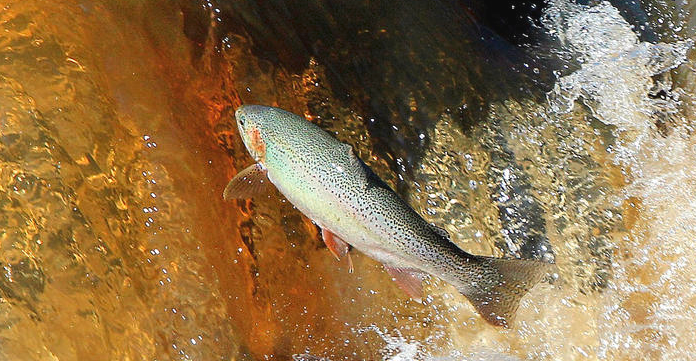Biologists in Minnesota have come to the conclusion that two non-native species of rainbow trout are cross-breeding in Lake Superior tributary streams. Introduced steelhea
d are now spawning with and alonsgide introduced Kamloops-strain rainbow trout. As for what this means for both contrived fisheries, it’s still up in the air. The good news for anglers, according the Minnesota Department of Natural Resources, is that most of the “steelhead” sampled by biologists were “pure” steelhead. Neither strain of rainbow trout is native to the Great Lakes. Steelhead are native to the west coast and Kamloops rainbows are native to the streams and lakes of southern and central British Columbia.
Speaking of introduced species, the Indiana Department of Natural Resources is busy this spring collecting eggs from female muskies to provide the needed 15,000 fingerling muskies the state needs to keep its muskie program going. The lake where biologists have been collecting eggs from ripe females has been on a downturn of late, so there’s some trepidation that the program will be able to continue as it has. Fingerlings are stocked in lakes throughout Indiana for the purpose of recreational angling.
Finally, with trout seasons starting or approaching across much of the country, it pays to know your knots. Here’s a quick primer to make sure you’ve got your knots down in time to hit the water this spring. Remember, knots the weakest aspect of any line, barring a knick or a fray. Tying good knots is important to keeping fish on the line.
Good luck out there.
— Chris Hunt



